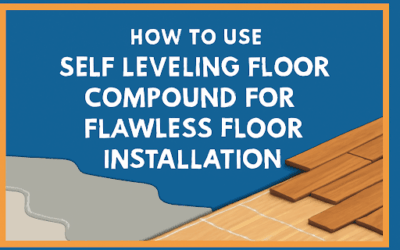Porcelain Tile or Ceramic Tile? Whether you are in the middle of a home renovation or building a new house, the question about what kind of floor tile to use is one the majority of homeowners ask. Choosing the proper tile for your home might be challenging because it significantly impacts your home’s overall appearance.
While you often hear ceramic tile being called the most popular and available option on the market, there are also many homeowners who prefer porcelain tile due to it being better quality. This is especially true when it comes to large surfaces such as living rooms and kitchen floors. Porcelain tile has been around for years and can be found in different patterns, colors, and styles, so it should be easy to find one which suits your interior design needs.
By reading this article you will be able to get a general understanding of porcelain tile and what you need to know to choose one for your home as well as how to install it. Let’s dive into the topic.
- Figure 1
Porcelain Tile Versus Ceramic Tile
You may wonder why you should use porcelain tile over ceramic tile, when porcelain is more expensive. The truth is that porcelain tile is a kind of ceramic tile. Both tiles are very similar and feel alike but they have some key differences that you should know before deciding to choose one over the other.
But what makes porcelain tile so unique?
The major difference between these tiles is the way they are built. Although they are both made of clay, porcelain tile is made from a more refined clay and heated to a higher temperature. This makes porcelain tile denser and stronger and as we know, makes them a high-quality tile over ceramic. But they are also more expensive. So how do you choose the right tile for your home?
In what follows we compare porcelain and ceramic tile from different aspects. By knowing these differences you can easily distinguish between these tiles and choose the perfect tile for your home based on your needs. So here we go.
Strength and Durability
The most obvious feature that distinguishes a porcelain tile from a ceramic tile is its higher quality in terms of strength and durability. Since porcelain tile is denser and less porous than ceramic tile, it is stronger and more durable. This feature makes porcelain tile more suited for heavy foot traffic areas.
The denser structure of porcelain tile also makes this tile more water and stain-resistant. These features give porcelain tile a longer lifespan and makes them easier to clean and maintain. All in all, if quality and lifespan are your concern, porcelain tile is the way to go.
Cost
As we know, quality comes with a price. Porcelain tile is more expensive than typical ceramic tile. A rough cost estimate shows that ceramic tile usually costs between 60-70% of porcelain tile. However, because of the longer lifespan of porcelain tile, the money you spend on it is definitely worth it.
Installation
The process of ceramic and porcelain tile installation is almost the same. They both are heavy and hard to work with, making installation difficult and time-consuming. Although, being harder makes porcelain tile slightly more brittle. Therefore, cutting them requires professional expertise. You will probably need a wet tile saw for cutting porcelain neat and clean, while a snap cutter works well with ceramic tile.
Here is the point:
Laying ceramic tile could be a DIY job. On the other hand, although you can install porcelain tile yourself, we highly recommend not doing that and hiring a professional contractor. This might result in extra costs, but as mentioned earlier, having a long-lasting tile is worth it.
- Figure 2
Design and Appearance
Ceramic and porcelain tiles are similar in appearance and may be indistinguishable. Ceramic tile tends to come in solid colors but may also have the appearance of wood grains or natural stone. Usually, ceramic tile comes with a red or brown back and actual glaze on the surface, and porcelain tile has a gray back and is hard to chip the surface.
One feature that makes porcelain tiles so special is that they are available in numerous design options; they can have the appearance of different building materials such as wood, stone, steel, bamboo, cork, plus others and be difficult to identify as a porcelain tile. Sounds interesting, right?
Use Area
Since porcelain tile is denser, stronger, and more impervious to water, you can use it not only indoors but also outdoors. Keep in mind, although it is strong, it is still a kind of ceramic tile, so consider porcelain tile for outdoor use only in mild climates. On the contrary, ceramic tile should only be used for indoor areas (see Figure 3).
Being heat resistant, makes both tiles a good choice for countertops.
- Figure 3
Various Patterns and Styles of Porcelain Tile
One of the greatest features of porcelain tile is its variety of sizes and looks. Different types of porcelain tiles are produced to fit customers’ different uses and preferences. In what follows, we will categorize porcelain tile from a size, grade, and appearance point of view.
Size
Most porcelain tile has almost ¼ to just over ⅜ inch (6 to 10 mm) thickness but comes in different lengths and widths. Typically the tile is rectangular or square. The most common sizes on the market are 12” × 12”, 18” × 18”, and 18” × 24”. Some manufacturers even produce larger tiles, such as 24” × 48”, 36” × 36”, and 48” × 48”.
Check this out: Generally, porcelain tile that is ¼ to 5/16 inch (6 to 8 mm) thick is suitable for most residential applications, while tiles that are ⅜ inch (9 to 10 mm) thick are better suited for commercial or heavy foot traffic areas.
Grade
Although we usually assume the grade of materials represents the quality, for porcelain tile, lower grades do not necessarily mean lower quality, but tell where it should be used. The mixture of materials and the tile thickness determines the grade of porcelain tile. According to the PEI (Porcelain Enamel Institute) standard, these tiles are divided into five categories in terms of grade, and each grade can be used for different areas. Therefore, when purchasing porcelain tile consider the area you are going to use the tile and take a look at the following descriptions.
- Grade 1: These tiles are useful for walls and kitchen backsplashes. They are not recommended for floors or countertops.
- Grade 2: These are ideal for walls and floors with light foot traffic, such as bathrooms or bedrooms.
- Grade 3: Tiles in this category are the best choice for residential floors and other areas with moderate foot traffic. We recommend using them for offices and small shops.
- Grade 4: If you are going to use porcelain tile for areas with heavy foot traffic, such as restaurants, shops, and offices, this is the best option. It can also be used for residential areas that need extra-strength floorings such as laundry and mudrooms.
- Grade 5: This is the toughest porcelain tile on the market and can be used for floors with heavy foot traffic, such as schools or hospitals. This tile usually comes in limited colors and patterns.
Body
The manufacturing process of porcelain tiles determines their body types. If you cut a porcelain tile vertically and look at the cross-section you might see each of the following:
- Homogeneous Body Tiles: In homogenous or full-body porcelain tile, the surface color and texture run through the body of the tile (see Figure 4). These unglazed tiles have high durability and wear resistance and are suitable for floors with medium and heavy foot traffic.
- Figure 4
- Full Premium-Colored Porcelain Tiles: This term refers to glazed tile whose body color closely matches the surface color of the tile (see Figure 5). Same as the full-body tile, these are both beautiful and durable and you can use them for floors with medium and heavy foot traffic.
- Figure 5
- Off-White Body Porcelain Tiles: The body of these glazed tiles consists of off-white materials and the color and pattern of the tile exist only on the surface of the material (see Figure 6). Therefore, scratches will be visible as the tiles are not homogenous throughout. You can use these tiles for light and moderate foot traffic floors.
- Figure 6
- Double Loading or Double Layer Porcelain Tiles: The last type in this category is double layer tile. As its name suggests, it is made by compressing two layers of clay together. The color and texture of the surface run through the top ⅛ inch of the tile’s cross-section and the remaining body consists of an off-white color material (see Figure 7). The doubled layer prevents the off-white material from being revealed in case of scratches.
- Figure 7
Porcelain Tile Appearance
As we discussed earlier, a feature that makes porcelain tile so special is its appearance. Here we categorized porcelain tile according to the most common looks you can find on the market.
- Glazed Porcelain Tile: These tiles are treated with a coating or glaze. They can have a glossy, translucent, clear, or matte finish (see Figure 8). They are available in a wide variety of shapes, colors, and sizes and are the most commonly used type of porcelain tile for non-slippery indoor areas such as kitchens and living rooms.
- Figure 8
- Unglazed Porcelain Tile: Unglazed tile is the simplest form of porcelain tile. These tiles have a matte look and are ready to use after baking and firing in a kiln. These tiles are more durable as compared to their glazed counterparts, so they are more suitable for outdoor uses. Although unglazed porcelain tile is more affordable than glazed tile, there is a lesser variety of colors and patterns.
- Textured Porcelain Tile: These tiles have a rough surface as opposed to the flat surfaces of typical tile. This type imitates the look of stone, wood, and other building materials (see Figure 9). Although offering pleasant aesthetics and slip-resistant features, it can be hard to clean textured porcelain tile.
- Figure 9
- Digitally Printed Porcelain Tiles: Manufacturing tile using digital printing is the latest technology for tile production. Using this method allows you to print any pattern or design on your preferred tile (see Figure 10).
- Figure 10
Tools and Techniques Necessary to Lay the Porcelain Tile Correctly
By now, you have learned a lot about the features of porcelain tile. Now we are going to talk briefly about porcelain tile installation. The first thing you need to think about is using the proper tools and techniques to ensure the tile is installed correctly.
Necessary Tools
Using the proper tools makes the porcelain tile installation easier and helps lay the tile correctly. Here we provide a list that you can use if you are considering laying the tile yourself.
- Rubber mallet
- Buckets
- Bubble level
- Notched trowel
- Grout float
- Tape measure
- Tile spacers
- Leveling clips
- Square
- Mixing paddle
- Drill
- Sponge
- Wet saw
- Reciprocating saw
Proper Techniques
The way you lay the tile has a significant effect on the quality of installation and the tile’s lifespan. For this reason, you should use proper techniques for the porcelain tile installation to ensure you do not risk the money you have spent. The techniques we are talking about include determining the location of the key tile, the direction of the tile, how the mortar is applied, and so on.
There are two techniques for starting the porcelain tile installation. The first tile is called the key tile and it has a key role in the overall look of the area after the job is done. You can either install the key tile in the center and work your way outwards or install the key tile in the corner and continue installing toward the other corners of the room.
There are also different techniques for the direction in which you run your tile on the floor. You can run the tile parallel to the walls or diagonally. The room layout, the size and shape of the tile, and the style that best fits your home are the most important factors that affect this decision.
Additionally, it is important to apply mortar to both the floor and the tile back during the porcelain tile installation. It is important to ensure full coverage of mortar to create a more secure bond between the tile and floor.
We will discuss all these matters thoroughly in our next article.
Tips for Successful Porcelain Tile Installation
A successful porcelain tile installation requires experience, attention to detail and a thorough guide that walks you step by step through the process. Here are a few general tips that will help you with the installation. In our next article we are going to go through all the details of the porcelain tile installation.
- First of all, due to being heavier and more brittle than ceramic tile, moving and placing this tile should be done very carefully.
- If you want to have finer grout lines and a clean symmetrical look we suggest using rectified[2] porcelain tiles. The sharp corners of rectified tiles help achieve thinner grout lines (see Figure 11).
Figure 11
- When purchasing porcelain tile, check the tile’s certification to make sure it is a porcelain tile.
- Since porcelain is a hard material to cut, we suggest hiring a contractor to achieve precise cuts with special saws. Otherwise, you might waste a lot of material.
- It is important to understand that reflection and varying natural light can change the appearance of porcelain tile after installation. Therefore, before installation, dry fit the tile and look at them from different angles during different times of the day to see how they are going to look after being installed.
- Remember that although porcelain tile is impervious, the grout lines are vulnerable to moisture. Therefore, we suggest sealing the grout lines to protect them from moisture.
Conclusion
In a nutshell, porcelain tile is one of the best flooring choices for both residential and commercial buildings. They offer a wide variety of colors, patterns, and finishes that go great with many styles and preferences.
In this article, we covered almost everything that you need to know in order to choose porcelain tile for your home, office, or shop and we hope you found it useful.
However, the other thing that should be considered when choosing porcelain tile is the installation process. We will cover all the details regarding porcelain tile installation in our next article.
No matter the style or quality of the tile, if the installation is not done perfectly you will not get the look you are going for. For this reason, we highly recommend leaving the installation job to professionals. If you live in Philadelphia and are looking for porcelain tile installation service or any other home renovation project, Matrix Company Solutions Corp. is your best choice. We have done numerous renovation projects and are here to help turn your house into a dream home. Do not hesitate to contact us via our FREE Consultation Service link for more information.




![Top 20 Reasons for Failing a Plumbing Inspection in Philadelphia [2025 Guide]](https://matrixgc.com/wp-content/uploads/2025/05/Common-issues-causing-failing-a-plumbing-inspection-in-Philadelphia.png)



Interesting post. I Have Been wondering about this issue. so thanks for posting. Pretty cool post.
Thank you for your feedback! We’re glad you found the post interesting and helpful. If you have any specific questions or need further information about using porcelain tiles in your home, feel free to ask. We’re here to assist you! 😊
I personally like your post, you have shared good article. It will help me in great deal.
We’re here to assist you! 😊
Every one is sharing information, that’s truly good, keep u? writing.
Thank you for your feedback! We’re glad you found the post interesting and helpful. 😊